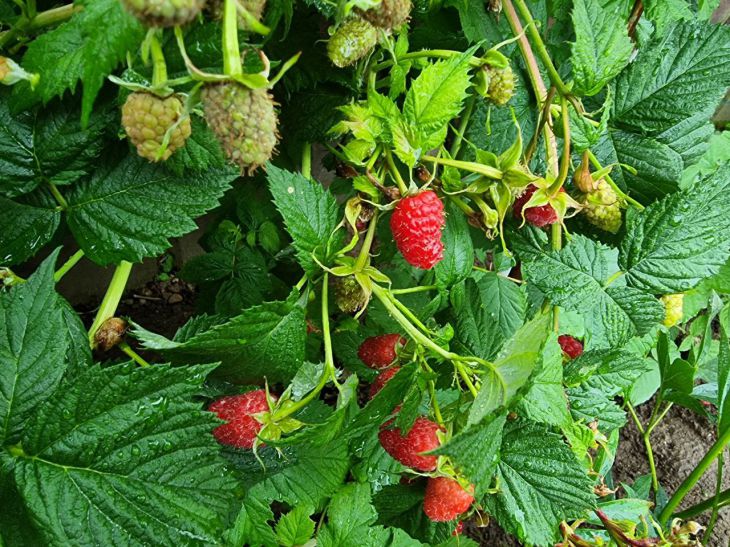Raspberries produce a healthy and tasty harvest and fill the human body with a lot of useful substances.
It is not surprising that it is very popular among Russian summer residents.
Raspberry care has its own peculiarities. In particular, its watering, in which there are important nuances.
Raspberries and why it is important to water them correctly
Among all berry crops, raspberries can be called the most moisture-loving. If you water them well and on time, you can achieve leaf growth, increased yield, and bright taste of berries.
If there is a lack of water, the berry bush will become smaller and tasteless. The raspberry shoots will stop developing actively, which can lead to the death of the raspberry bush. When watering, it is necessary to moisten the soil by 35-50 cm to saturate all its numerous roots.

Watering time and volumes
Raspberry bushes need help to wake up after winter, so the first watering should be done after the snow melts. Active watering should begin in May, before the raspberry begins to bloom.
Water should be added twice a week, pouring up to 4 buckets per square meter. A similar watering schedule is necessary in June, when the berries begin to ripen.
If hot weather sets in in the region, then watering should be increased by 2 times. In the fall, it is important to carry out moisture-charging watering, which provides the raspberry patch with moisture until spring. With it, you need to pour 6-8 liters of water per square meter, soaking the soil to a depth of 1.5 m.
Types of irrigation
Some summer residents prefer to water raspberries using a hose, but not during the flowering period and when the berries are already ripe.
Others prefer to apply water exclusively into furrows dug between rows at a distance of 30-50 cm from each other.
The furrow depth should be about 15 cm. After watering, the furrows should be dug in and the entire raspberry patch should be loosened. This is necessary to restore oxygen exchange and deep penetration of moisture into the soil.
Raspberry Fertilizers
The quality of the bushes, the quantity and taste of the berries depend entirely on how carefully the gardener monitors the raspberry fertilizing. In the spring, nitrogen in the form of liquid fertilizing is needed to restore the green mass and nutrition of the bushes.
As soon as the raspberry bush has gained foliage and strengthened its stems, this type of fertilizer should be reduced to zero. Pruning and tying the raspberry bush is considered stress for the bushes. They need to be fed with nitroammophoska. Then, during the fruiting period, raspberries require additional feeding in the form of peat, manure or bird droppings diluted in water.
Cutting off fruiting shoots
Once the berries have been collected, all shoots involved in fruiting must be pruned. They must be cut off at the root and disposed of.
This procedure is necessary for high-quality nutrition of young shoots, thus preparing them for the next year. In the spring, these shoots should be removed to the first bud and watering should begin to activate the process of bush development.
Watering the raspberry bush throughout the season is the key to its good yield. The listed recommendations will help to grow a healthy and tasty crop.








